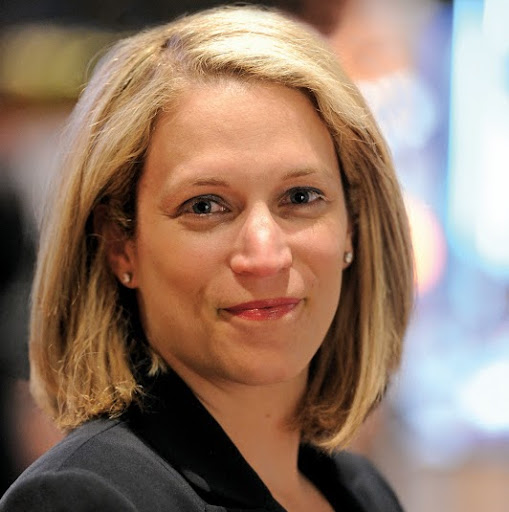As the multi-billion dollar specialty retail industry marks its 30th anniversary, let’s look at its vibrant history.
Market merchants and pushcarts have existed for centuries. But who brought them into the shopping center industry? Their origin sparks ongoing debates, and the proper credit for inventing the specialty retail business needs to be more specific. When pieced together, the history of specialty retail makes for an intriguing story.
Uncovering the Origins of Specialty Retail
The Rouse Company of Columbia, MD, was recognized as the inventor of specialty leasing, launching Faneuil Hall Marketplace in Boston, MA, in 1976. The entire credit for the evolution of this marketplace went to Jim Rouse.
However, Larry Wolf (Jim Rouse was his boss) claimed he came up with the idea of pushcarts. Even though Larry passed away in 2007, Alison Wolf (his daughter) preserved his letters that demonstrated his ongoing interest and early invention in the cart program. This program conceived Faneuil Hall.
To set the record straight, Larry wrote a letter to Maureen Milford, a writer for The New York Times. She authored a story called “Islands in the Mall: Pushcarts as Revenue Streams,” dated 1/22/2003. Larry responded by stating that he was the Director of Leasing for The Rouse Company and had personal knowledge of the matter.
He said that Jim Rouse reviewed the property for Faneuil Hall Marketplace and thought it was “wonderful.” This property was decayed entirely and was long abandoned. At this point, Larry thought there was no way they could lease the place.
Leasing the property was difficult because it was non-traditional, making it a challenge for retailers to understand. This project didn’t have traditional anchor department stores or acres of free parking. Larry said this project needed better received by the retail community and could only lease 50% when it opened.
I introduced carts to make the market appear full and thriving on opening day. However, Jim Rouse tried to take some credit. Larry also suggested that if Maureen were interested, he would love to discuss this matter further.
According to Allison Wolf, her father played as much of a role in starting the cart business at Faneuil Hall as Jim Rouse did. “He was modest about it and knew that he had to give credit to his boss, but Dad did come up with the idea of pushcarts and the business strategy to nurture small entrepreneurs to open businesses. But he also had the responsibility to convince and sell Crate & Barrel to open its first store at Faneuil Hall Marketplace,” Wolf explained.
Alison also said the best memory of her father was his interest in nurturing mom-and-pop businesses. Although the shopping world shifted, Larry would still find a way to maintain the values and be clear about what brings people to a place. Moreover, Larry took pride in nurturing a creative idea (pushcart) that helped retailers grow.
Faneuil Hall’s leasing objective for The Bull Market is to attract local and unique products representing Boston’s rich history. The goal is to strike a balance between local artisans and traditional entrepreneurs.
Rick Battista, the current Business Development Manager of Faneuil Hall Marketplace, said that many early merchants continue to operate within the program. Boston Campus T-shirts and Sheepskin Products has become a permanent kiosk operator.
In contrast to the past, where leases at FHM lasted up to a week, today, most pushcart deals span seven months to a year. The only remaining trace of merchandising history is the “Artisan’s Corner.”
Evolution and Success of Pushcarts in Retail Commerce
Pushcarts and Retail Merchandising Units (RMUs) have transformed into a thriving $12 billion business globally. Although they have become a significant player in the distribution industry, their rise took time.
In the mid-1970s to early 1980s, shopping center developers initially enjoyed the additional income from temporary tenants like Santa’s Corner and Cherry Hill Photo. These tenants paved the way for the growth and success of this unique retail sector. It is a profitable business today, and pushcarts are available in most public spaces, such as malls, airports, and streets worldwide.
In 1971, Robert and Evie Norins created Santa’s Corner and opened their first kiosk in Roosevelt Field in Garden City, NY. They also launched The National Mall Monitor, the first magazine for the growing shopping center industry. In the spring of 1997, Specialty Retail Report’s first issue emerged.
As a magazine expanded into a large publication, Santa’s Corner experienced significant growth. It evolved and began operations in over 300 locations during the holiday season. Recognizing the potential in the common areas of shopping centers, the entrepreneurial couple launched Sales Dynamics, Inc. (SDI) in 1988 as their third venture.
It emerged as the first third-party common area specialty leasing program. SDI leased, managed, and operated the leasing programs for a developer for a small fee. In addition, it eliminated the need for any capital outlay, putting the developer at ease. Sales Dynamics had 60 developers on board and was operating 150 programs.
By 1996, developers started to bring specialty leasing programs in-house. It led to the decline of SDI’s services as developers opted to handle operations internally.
Hickory Farms: From Cheese Shop to Innovative Kiosks
In 1975, Dick Ransom, the founder of Hickory Farms, a little-known cheese and meat purveyor, introduced common area kiosks to test new waters. Moreover, this led to the birth of Hickory Farms‘ temporary stalls, which have expanded to over 700 locations across North America and Canada.
Ransom saw kiosks as an opportunity to reach smaller markets where permanent stores would be challenging. With initial sales of $9,000, the founder challenged his team to develop and grow the kiosk business model. In 1992, Vivian Miller, the former Director of Seasonal Leasing at Hickory Farms, played an essential role in expanding the kiosks across the US.
Transforming Common Areas: The Rise of Specialty Leasing
During the recessionary period of the late 1970s, temporary leasing of inline space was rare. In the meantime, cart vendors began disrupting shopping center common areas due to poor visual and merchandising standards. Generally, the retailers needed to align with the merchandising direction and the center’s strategic marketing goals.
Marketing directors, known as promotion directors back then, addressed the chaotic growth of common area businesses. One change agent was Carol Ann “Caz” Zale, who shaped specialty leasing programs at Crown American.
Zale recalled that “I remember asking each vendor for $200 in rent, and when I started to collect it, corporate didn’t have an account to put it in, so they deposited it in the ‘Pay Toilet account.'”
Despite initial challenges, Zale successfully developed the program, expanding it to all Crown American Corporation centers. Moreover, she got a specialty income account on the books.
As the program became prevalent, it faced resistance from presidents and owners of inline stores and national chains. These individuals believed that the merchandising programs impacted their sales.
However, a few individuals recognized the importance of entrepreneurial growth for the industry’s success and its positive impact on income.
Significant Specialty Retail Leasing Developments
The Friday Market at the Park initially hosted a weekly farmer’s market. After selling this center to Westcor, it underwent renovation and re-merchandising in its initial days; specialty retail leasing needed to be more organized.
The 1980s saw an emergence of new national temporary retailers such as Big Horn Sheepskin, Brookstone, California Closet, and Halloween Adventure, who followed in Hickory Farm’s footsteps.
Over time, national retailers like Harry & David, Burlington Coat Factory, and MAC Cosmetics brought brand recognition to the business. Early on, developers faced challenges determining where specialty leasing should be placed within an organization.
Mark Klockner, the owner of Retail Infusion, highlighted that these programs lasted a year, with the bulk of business during Christmas. Eventually, Klockner took the position of director of specialty leasing at General Growth Properties. He was responsible for educating mall managers on how his team could facilitate them in maximizing results.
Karen Corsaro, known as the ‘quality queen,’ started at Simon Properties. She played a crucial role in upgrading the common areas at the center and scaled different projects. Also, Corsaro was disgusted by how these common areas were arranged and suggested that businesses needed upgrades. She ordered ‘gazebos’ for a couple of centers and encouraged every center to adhere to standards.
The Rouse Company, known as pioneers of specialty retail leasing, watched how other developers imitated the idea. In 1983, they introduced portfolio-wide event merchandising programs. Different directors managed specialty retail for years. Duffy Crawford-Weir was named the first Director of Specialty Retail Leasing in 1988.
These programs generate additional revenue and contribute to establishing a center’s image, bringing visual excitement and a sense of change that leads to differentiation.
Different Variations in Naming Specialty Leasing
Specialty leasing in its early days needed proper names, and different developers had various names for this retail concept. Simon Properties called it the “Retail Development Program,” while General Growth called it “Business Development.” Even today, developers continue to employ different labels for specialty leasing.
In 1988, Sharon Polonia, the Director of Specialty Leasing for Equity Properties, coined the term RMU (Retail Merchandising Unit). Her team needed a name for a new unit designed by Tony Horton, and they settled on RMU to describe this pushcart-like unit without wheels.
The Rise of REITs and Technological Advancements
In the 1990s, the specialty retail landscape changed significantly when development companies became REITS (Real Estate Development Trusts). The original purpose of specialty retail was to provide a temporary incubation ground.
However, this diluted when the pressure to generate income intensified. This led to a shift towards more prominent operators and regional and national chains. Escalating rents and additional charges drove out local owner-operators.
Major developers, such as Corporate Property Investments to Glimcher, recognized the importance of specialty leasing. They started hiring dedicated staff to support its growth in the 1980s and early 1990s.
Industry leaders like Jim Allen, Coleen McNelis, Heidi Maybruck, Deborah Georgetti-Piro, and Melinda Holland played a vital role in developing specialty retail leasing. Each retailer shared their experiences and created the leasing program accordingly.
However, the introduction of the Internet reformed the industry. Retailers could streamline documents and send email communication for license agreements. It led to a significant shift in business operations within the specialty retail leasing sector.
The Birth of Specialty Retail Report and SPREE
Specialty Retail Report was launched in 1997. Patricia Norins, the publisher, had a strong background in entrepreneurship and a deep understanding of retail as her parents discussed retail locations and concepts at the dinner table.
The magazine’s editorial focus has evolved to highlight the products, concepts, and individuals that bring success.
Specialty Retail Report launched SPREE in 2005, recognizing the need for a dedicated event. It is a groundbreaking annual expo that brought specialty retailers and developers under the same roof. This fostered collaboration and promoted networking opportunities within the specialty retail community.
Specialty Retail: A Thriving Industry
Over the years, specialty retail has undergone a remarkable transformation. It has emerged as a multi-billion dollar industry and no longer sells foodstuff and novelty items.
The sector has numerous dedicated professionals that have contributed to achieving meteoric growth. Owing to their efforts, the industry is a vibrant business. Although leadership has changed over time, the essential role of common areas in effective merchandising has remained constant.
Melinda Holland, SVP of Business Development at General Growth Properties, reflects on the evolution of specialty retail. She expresses gratitude for the opportunities brought by the industry. She stated, “How cool is it that we created an industry and to think of all the relationships and friendships that have been created as a result of it.”
As it grows alongside the shopping center industry, specialty retail brings innovation to its dedicated professionals.
Valuable Insights from Lauren Monk About the Big Idea
Laurin Askew, former Vice President and Director of Design for The Rouse Company, shared valuable insights into the origins of the specialty retail industry in North America.
Known as “Monk,” Askew was influenced by Jim Rouse. He played an essential role in shaping the industry’s early days and convinced Boston architects that Faneuil Hall Marketplace’s revival was possible.
When discussing the inception of the cart program at Faneuil Hall Marketplace, Monk chose his words carefully. While many have claimed ownership of the idea over the years, the collective effort of Jim Rouse, Ben Thompson, Lehr Jackson, Larry Wolf, and other influential figures left a permanent mark in the retail industry.
Question from Monk Regarding Specialty Retail
Q: Faneuil Hall Marketplace is credited mainly in the industry for initiating the pushcart phenomenon that, 25+ years later, has morphed into a 12-billion-dollar business. Can you recollect how this concept of pushcarts in the common area came to be? In other words, what was the “Big Idea” behind it?
Phase 1 of the Faneuil Hall Marketplace by The Rouse Company opened after building fifty thousand square feet and including eleven lenders. Near the time of the opening, leasing the entire space seemed impossible. As a result, they wanted to fill the vacant space with something that felt as if it belonged. Moreover, it had to be appropriate to Faneuil Hall and its projected merchandising. Historically, carts were fitting. This simple idea seemed appropriate for the moment and the circumstance. The Faneuil Hall team implemented the idea and received excellent reviews from the phase 1 opening.
Q: What did you see as the designer/architect of how this would become a “place maker” for the urban marketplaces and the following projects?
It was imperative to ensure that design and merchandising were hands in hand as they are both creative endeavors. When the two worked together, there was the opportunity to enhance the “sense of place” for the center or the location. It also added a unique experience to shopping. This new concept also gave the potential for adding an income stream. These cart merchants could become specialized shopping environments with distinctive identities and a sense of place.
Q: As the marketplace-type centers evolved (Faneuil Hall, Harborplace, South Street Seaport, Riverwalk, and Bayside), how did the original Faneuil Hall Marketplace pushcart program become with them?
The original pushcart program became expensive and intricate. For them, storage and security started to emerge as significant issues. In some instances, the “look” of the cart got more critical at the expense of function. In this situation, the coach was expected to do more and solve more issues than was practical.
Q: Who do you think were the “industry game changers” (developers) who quickly adopted the pushcart concept for their properties?
The Rouse Company was an innovator and a game-changer. Most national developers moved into the industry to embrace the “cart idea” after they saw revenue generation.
Q: When and how did it evolve into the suburban mall environment, and what did you do to shape the design of carts, kiosks, and RMUs?
Naturally, carts would be adopted in suburban malls. Other developers were not invested in urban marketplaces compared to the Rouse Company. Many players embraced the cart idea and needed to understand it completely.
Q: Fast-forward 30+ years later—do you like what specialty retail has become? Explain.
Specialty retail has changed in the last 30+ years and is scattered everywhere. Today the carts have become massive and are driven totally by bottom-line thinking. Most programs are generic and difficult to distinguish from one center to the other.
Q: If you could make one change that would improve or reinvigorate the temporary tenant business, what would it be?
The changes come down to who is conceiving the program and the goals. The idea of carts in the Faneuil Hall Marketplace differs from specialty retail carts today. Monk suggests that specialty retail programs should not be an afterthought to boost the bottom line. These programs should be a significant component of the retail atmosphere. It is imperative to remember that specialty retail cart programs require a lot of hands-on effort to run.
Specialty Retail Leasing Milestones
1972: Roosevelt Field shopping center welcomes the first seasonal, temporary kiosk.
1975: Hickory Farms’ seasonal stores serve as a model for kiosk concepts.
1976: Faneuil Hall Marketplace introduced pushcarts as a disguise for the vacant space. It gave giving birth to the Bull Market. Merchants had to pay a flat $125 weekly rent and a percentage of their sales.
1978: Holiday and seasonal kiosks appear in shopping centers across America. At this point, developers started enjoying the additional income.
1980s: American developers recognize the revenue potential of temporary tenants. Rouse, Simon, Homart, and Cafaro created internal organizations and training tools for specialty retail.
1983: Simon hires Karen Corsaro as a “Retail Specialist” to train retailers on how to sell. Karen recognized the power of the common area and noticed the unorganized way this kiosk was arranged.
1985: Simon Properties invests $1 million to purchase equipment that will allow every center to reach a standard level.
1987: The first Temporary Tenant Conference was held by ICSC to share ideas about temporary tenant programs.
1988: Corporate Property Investments launches a specialty leasing program.
1990s: Shopping center developers prioritize revenue generation through carts, kiosks, and temporary inline. Custom cart and RMU manufacturers see growth.
1993: General Growth Properties launches the Business Development specialty retail program. Then Taubman Properties starts temporary inline leasing.
1997: Specialty Retail Report, the first magazine for carts, kiosks, and inline stores, is launched.
2005: The first Specialty Retail Entrepreneur Expo and Conference are held in Boston. Specialty Retail Report also produced SPREE.
2011: Specialty Retail Report celebrates its 15th anniversary, marking 35 years since the inception of the specialty retail industry.

Patricia Norins is a strategic storyteller in the retail industry. With nearly 30 years of experience, she expertly combines innovative marketing strategies and industry knowledge to effectively convey brand stories. Coming from a fourth-generation retailer family, Patricia has a deep-rooted passion for retail real estate and has pioneered concepts such as adding retail to common areas and creating specialty leasing programs. In addition to her professional achievements, she actively mentors and contributes to the community, including co-teaching MBA classes.



